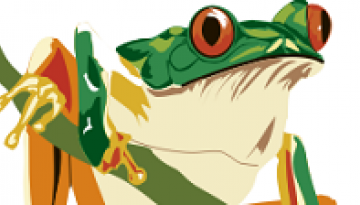Monitorujeme 1696 zdrojov

 Google Dooles 24.09.2018 01:06
Date: September 24, 2018
Charging bisons, wild horses, and mysterious handprints—primeval evidence of humanity’s creative genius, miraculously well preserved after some 36,000 years. Today’s Doodle celebrates the 139th anniversary of the first discovery of cave paintings at the Altamira caves in Cantabria, northern Spain—a masterpiece of the prehistoric era.
Nicknamed “the Sistine Chapel of paleolithic art,” Altamira was discovered in 1879 by the amateur botanist and archaeologist Marcelino Sanz de Sautuola who first noticed animal bones and flint tools there. He returned his daughter Maria, who first noticed the red and black paintings covering its walls and ceiling, rendered in charcoal and hematite, depicting animals including European bison and bulls.
Early claims of the caves’ paleolithic origin were mostly dismissed as fake. Some argued that the art, which includes abstract shapes as well as depictions of wildlife, was too sophisticated for the time. Then in 1902 a French study of Altamira proved these paintings were in fact paleolithic, dating to between 14,000 and 20,000 years ago. Now a UNESCO World Heritage Site, the Altamira caves are open for public visitation.
Location:
,
,
,
,
,
,
,
,
,
,
,
,
,
,
Tags:
Google Dooles 24.09.2018 01:06
Date: September 24, 2018
Charging bisons, wild horses, and mysterious handprints—primeval evidence of humanity’s creative genius, miraculously well preserved after some 36,000 years. Today’s Doodle celebrates the 139th anniversary of the first discovery of cave paintings at the Altamira caves in Cantabria, northern Spain—a masterpiece of the prehistoric era.
Nicknamed “the Sistine Chapel of paleolithic art,” Altamira was discovered in 1879 by the amateur botanist and archaeologist Marcelino Sanz de Sautuola who first noticed animal bones and flint tools there. He returned his daughter Maria, who first noticed the red and black paintings covering its walls and ceiling, rendered in charcoal and hematite, depicting animals including European bison and bulls.
Early claims of the caves’ paleolithic origin were mostly dismissed as fake. Some argued that the art, which includes abstract shapes as well as depictions of wildlife, was too sophisticated for the time. Then in 1902 a French study of Altamira proved these paintings were in fact paleolithic, dating to between 14,000 and 20,000 years ago. Now a UNESCO World Heritage Site, the Altamira caves are open for public visitation.
Location:
,
,
,
,
,
,
,
,
,
,
,
,
,
,
Tags:
NEWS.SK odporúča
Nie sú nájdené žiadne články.
Nie sú nájdené žiadne články.

























